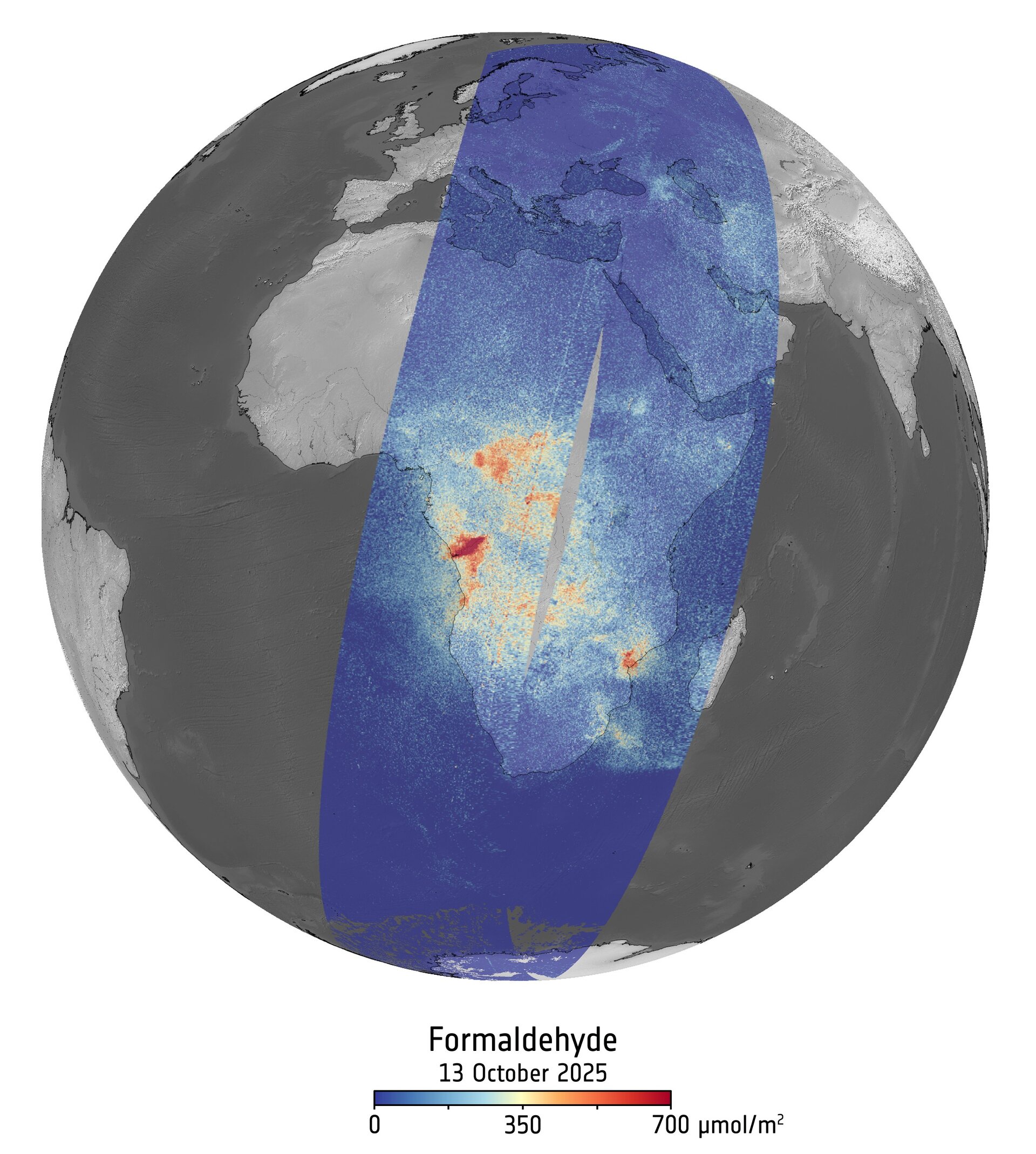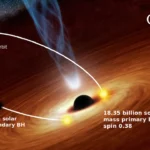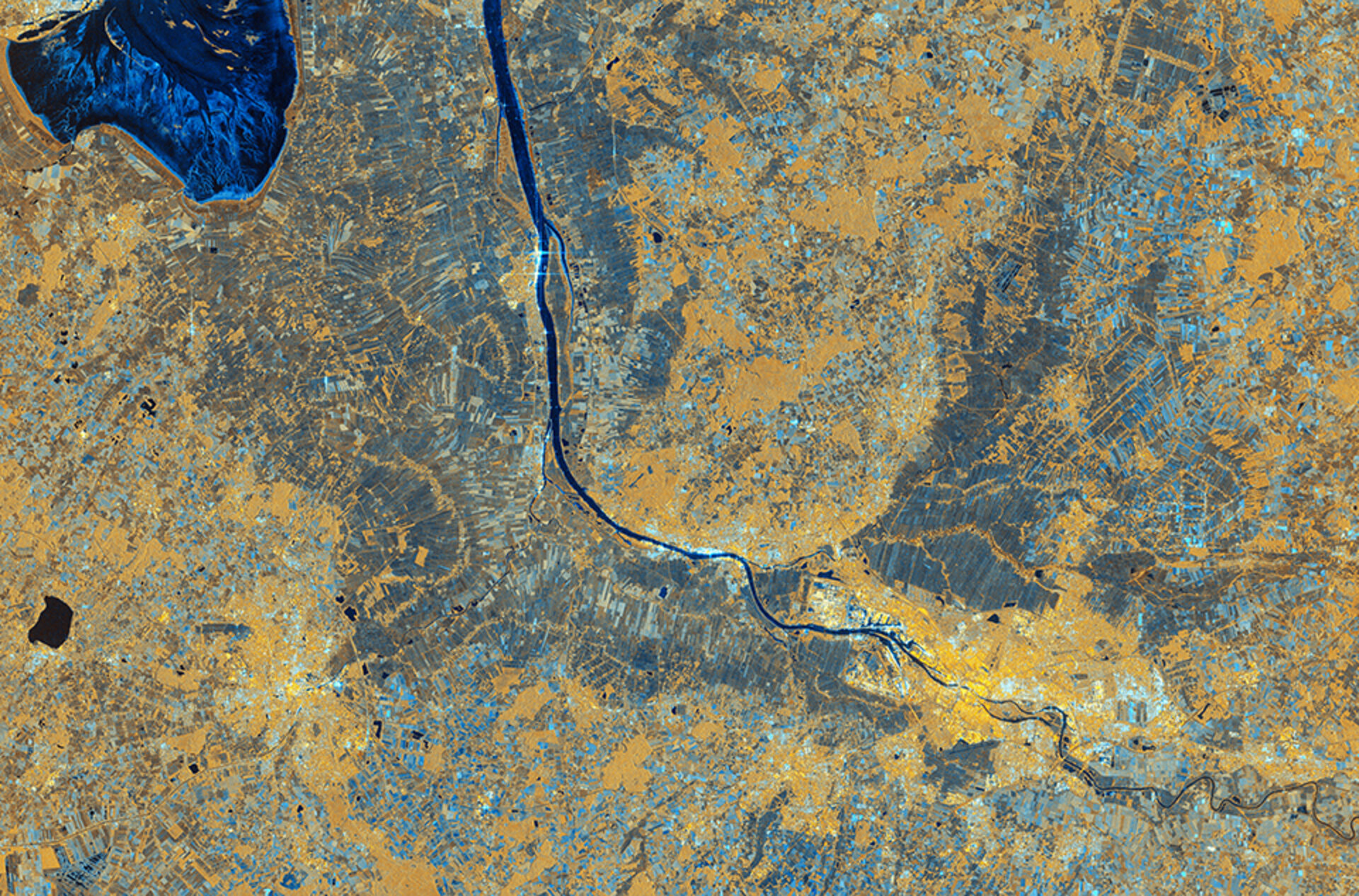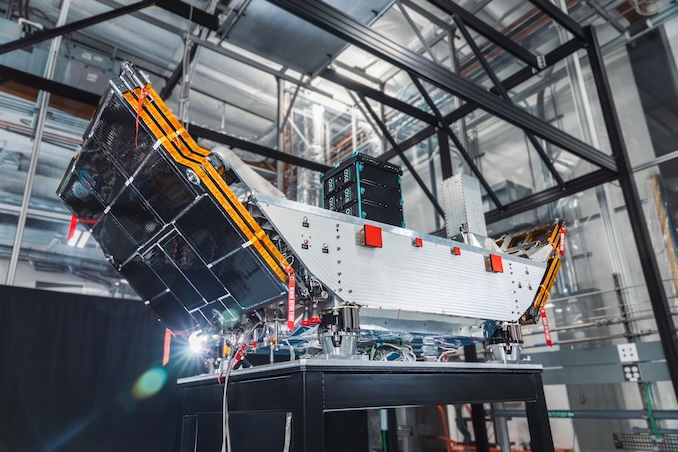Now Reading: Sentinel-5 debuts images of atmospheric gases
-
01
Sentinel-5 debuts images of atmospheric gases
Sentinel-5 debuts images of atmospheric gases


26/11/2025
300 views
1 likes
Launched just a little over three months ago, Copernicus Sentinel-5A has returned its first images – including a global map of ozone, maps of nitrogen dioxide over the Middle East and South Africa, formaldehyde over parts of Africa, and emissions of sulphur dioxide from an active volcano in Russia – showcasing the mission’s powerful capability to monitor atmospheric gases worldwide.
Sentinel-5A is an advanced imaging spectrometer embarked on the first MetOp Second Generation (MetOp-SG-A1) weather satellite, which was launched into polar orbit in August 2025.
Another two Sentinel-5 spectrometers, Sentinel-5C and Sentinel-5D, will be launched in the future, one on MetOp-SG-A2 and one on MetOp-SG-A3, achieving lifetime of more than 20 years for the Sentinel-5 mission.
ESA’s Sentinel-5 Mission Scientist, Ben Veihelmann, said, “Sentinel-5 is a very powerful European mission to observe our atmosphere. With its long mission lifetime, Sentinel-5 will be instrumental for monitoring greenhouse gases, ozone layer recovery, and air pollution trends.”
The Sentinel-5 mission provides observations of key air pollutants, essential climate variables, and stratospheric ozone – the protective layer shielding life on Earth from harmful ultraviolet radiation.
From an altitude of 832 km in a polar sun-synchronous orbit, Sentinel-5 captures comprehensive data across the entire globe each day. It complements the Sentinel-4 mission, which observes Europe and North Africa hourly from geostationary orbit.
The Sentinel-5 mission’s high-resolution imaging spectrometer operates across seven spectral bands, spanning the ultraviolet, visible, near-infrared and shortwave infrared ranges to measure a host of trace gases, including ozone, nitrogen dioxide, sulphur dioxide, formaldehyde, glyoxal, carbon monoxide, and methane, as well as aerosols and UV index.
Sentinel-5A is still in its commissioning phase, but this selection of first images, nonetheless, offers a tantalising glimpse of what’s to come.
Heinrich Bovensmann, from the University of Bremen, noted, “It is exciting to see that an idea we have been working for more than a decade has come to life.”
The first image featured here, a global map of ozone, was captured on13 October. Ozone plays a dual role in Earth’s atmosphere: while stratospheric ozone shields life from harmful UV radiation, ground-level ozone is a harmful air pollutant that affects human health and ecosystems. The total column density seen in the image is dominated by the stratospheric component.
The hole in stratospheric ozone above Antarctica is clearly visible, with column density values falling below 220 Dobson Units. Although the use of ozone-depleting substances such as halogenated hydrocarbons was banned under the Montreal Protocol in 1989, their long life in the atmosphere means that the full recovery of the ozone layer has been gradual.
Evidence of this recovery has only begun to appear in recent years. Sentinel-5’s observations will extend and strengthen the long-term record of ozone monitoring, helping scientists track the ongoing recovery of this vital protective layer.
The second image shows the vertical column density of nitrogen dioxide on 13 October 2025 over the Middle East, where higher concentrations can be seen around major cities and over industrial oil and gas refineries, power stations and smelters. Elevated concentrations are also evident over the densely-populated Nile Valley in Egypt.
Nitrogen dioxide is a major air pollutant produced primarily by human activities such as traffic, power generation, industrial processes, cooking and heating. Because clouds can obstruct the satellite’s view of near-surface nitrogen oxide some areas appear less clearly defined.
The third image also shows nitrogen dioxide on 13 October 2025, but over South Africa. High concentrations can be seen in the Highveld region, which likely come from the coil-fired power stations.
The fourth image presents the formaldehyde vertical column density on 13 October 2025. Elevated concentrations along the northwestern coast of Angola are linked to emissions from wildfires, while enhanced levels over the Central African Republic stem from a combination of fire activity and biogenic emissions. Formaldehyde is a carcinogenic air pollutant.
Because formaldehyde is typically concentrated near the surface, clouds can obscure the satellite’s view, reducing data coverage. The current HCHO dataset is preliminary, and biases in partially cloudy regions will be corrected as data processing improves.
The fifth image shows a plume of sulphur dioxide being emitted from the Klyuchevskaya Volcano in the Kamchatka Peninsula, far eastern Russia. It is one of the most active volcanoes in the world – having erupted more than 50 times since 1700 – is characterised by smoke continuously billowing above its summit.
The final image presents Earth radiance data from 5 to 6 October 2025. The data acquired during an entire day cover the entire globe. Specific spectral ranges of the measurement data have been assigned to the colours red, green and blue to generate this false colour map. The map shows land, ocean and clouds and has been used mainly for verifying the in-flight health of the satellite instrument.
ESA’s Sentinel-5 Project Manager, Didier Martin, said, “We are extremely pleased to see these first preliminary results, and I would like to thank everyone involved in making this mission a success.
“Most importantly, the results confirm that the Sentinel-5A imaging spectrometer is performing well, with calibration and the data processing chain progressing as planned. This puts the mission firmly on track to support scientific research, air-quality and UV health alerts, and the monitoring of essential climate variables — ultimately delivering benefits for citizens, the environment, and the economy alike.”
ESA’s Director of Earth Observation Programmes, Simonetta Cheli, said, “Developed by the European Space Agency for Copernicus – the Earth observation component of the European Union’s Space programme – Sentinel-5 builds on the success of the Sentinel-5 Precursor mission, introducing next-generation technology for atmospheric composition monitoring.
“We are very proud to contribute to this important mission, working closely with our key partners – the European Commission, Eumetsat, and our dedicated industrial teams. This achievement truly highlights the power of collaboration.
“The mission is still in its commissioning phase, but these first results clearly show that everything is functioning well. These initial glimpses are extremely encouraging. We now look forward to Copernicus Sentinel-5 becoming fully operational in the coming months.”
Stay Informed With the Latest & Most Important News
Previous Post
Next Post
-
 01From Polymerization-Enabled Folding and Assembly to Chemical Evolution: Key Processes for Emergence of Functional Polymers in the Origin of Life
01From Polymerization-Enabled Folding and Assembly to Chemical Evolution: Key Processes for Emergence of Functional Polymers in the Origin of Life -
 02Panasonic Leica Summilux DG 15mm f/1.7 ASPH review
02Panasonic Leica Summilux DG 15mm f/1.7 ASPH review -
 03How New NASA, India Earth Satellite NISAR Will See Earth
03How New NASA, India Earth Satellite NISAR Will See Earth -
 04And Thus Begins A New Year For Life On Earth
04And Thus Begins A New Year For Life On Earth -
 05Astronomy Activation Ambassadors: A New Era
05Astronomy Activation Ambassadors: A New Era -
06SpaceX launch surge helps set new global launch record in 2024
-
 07Two Black Holes Observed Circling Each Other for the First Time
07Two Black Holes Observed Circling Each Other for the First Time




















